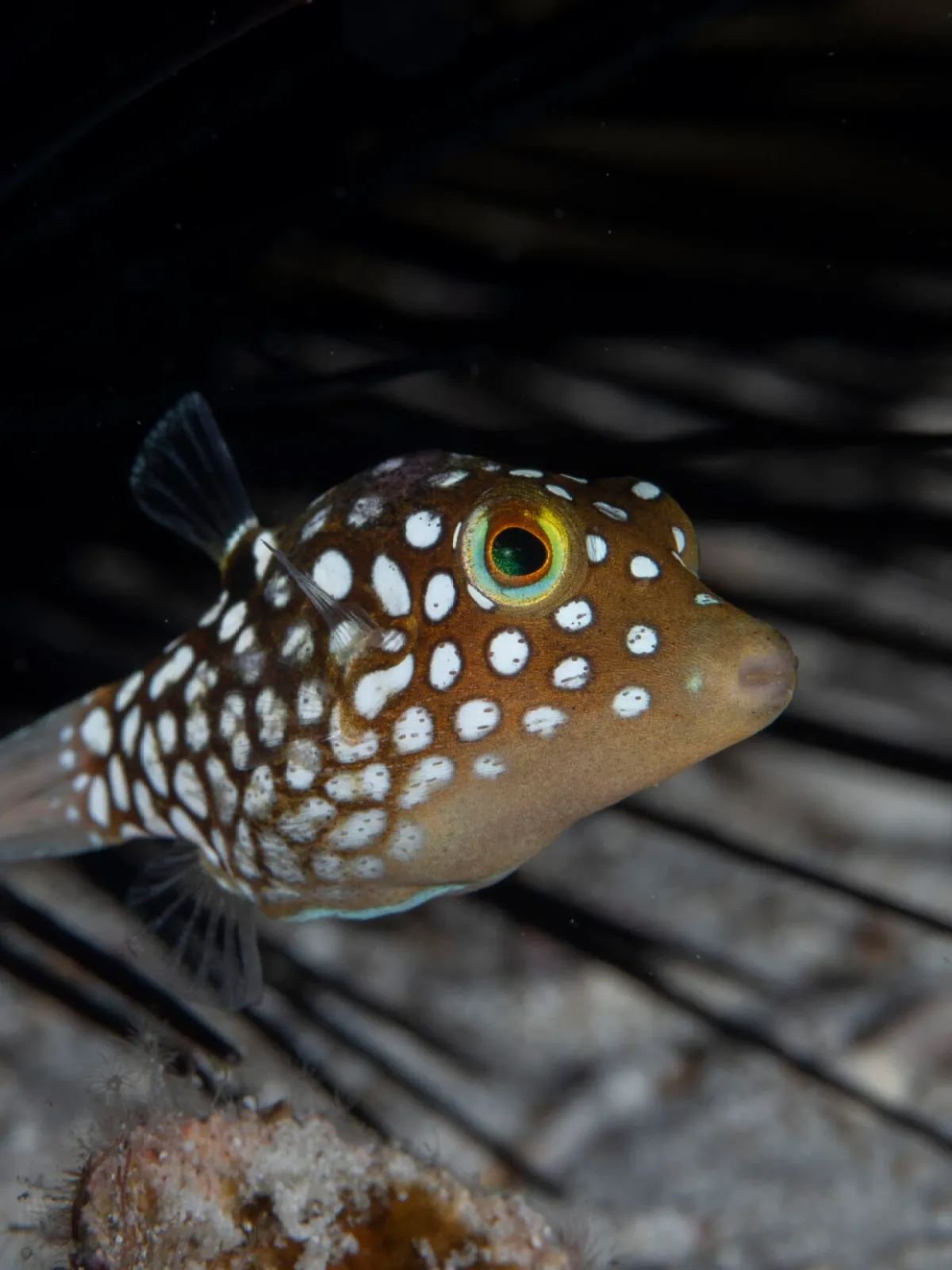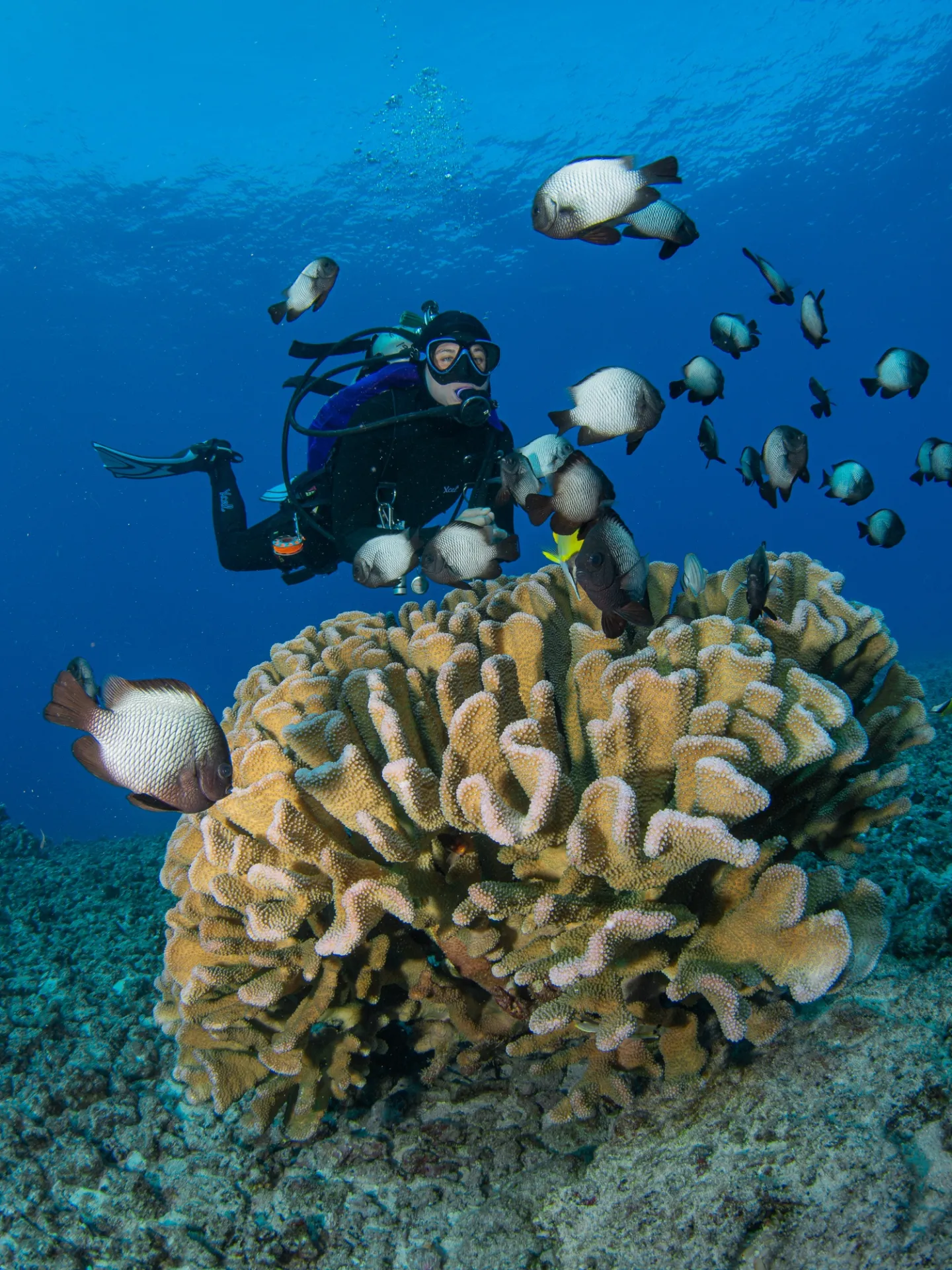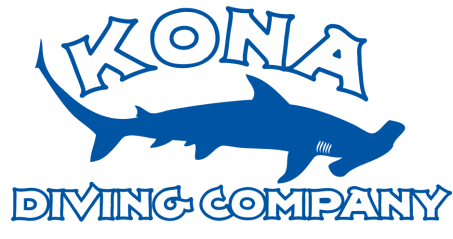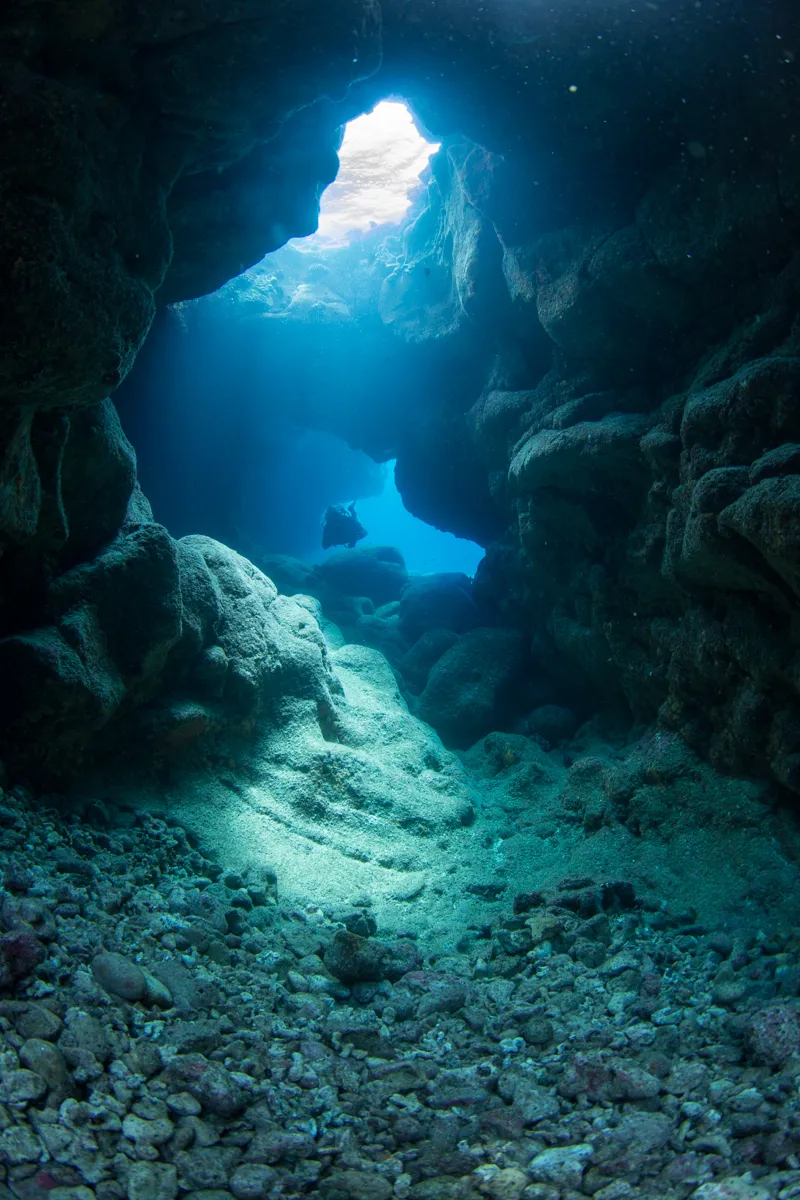The Hawaiian Islands are a unique and magical archipelago. Geographically isolated and geologically unique, they are considered a gem of the Pacific. With an incredible abundance of megafauna, dramatic lava structures and stunning variety of endemic animals, it doesn’t matter if you are a brand new diver or a seasoned veteran; Hawaii has something for everyone.
The Island of Hawaii, known as the Big Island, is where we call home. Less than a million years old, it is the youngest in the island chain and with its volcanoes still active, it is still growing. Kailua Kona, also known simply as Kona, sits on the west side of the Big Island. In the Hawaiian language, Kona means “leeward” or “protected from wind.” This opportune location means our coastline is typically protected from rough winds and swells. As such, it’s common for us to regularly enjoy calm and clear blue waters- perfect for diving.
Being a volcanic island, the Big Island is rich with dynamic underwater topography, sculpted by hundreds of thousands of years of lava flows. On calm days, which are often abundant, we have the opportunity to dive through canyons, lava tubes, arches and craggy pinnacles- all which offer refuge to a delightful variety of animals.
With no continental shelf, our drop offs are typically quite close to the shoreline, affording us multi-level profiles at most of our dive sites. With quick access to both deep and shallow water, it’s easy to keep new divers and more experienced divers happy at the same dive site. Close proximity to drop offs can also increase the chance for encounters with bigger animals that often prefer deeper waters (like dolphins, sharks and rays).
Located about 2,300 miles (3,680 km) from the nearest continental shore, the Hawaiian Islands are the most isolated group of islands on Earth. The plant and animal life found here is the result of early, infrequent colonizations of arriving species and the slow evolution of those species. As a result, Hawaii has the greatest showcase of endemism to be found anywhere in the world (even greater than the Galapagos Islands). If this is your first trip to Hawaii, you will definitely see some new faces and our guides love pointing out species that can only be found here.
At Kona Diving Company, we like to maximize our time underwater, while still adhering to safe practices and protocols. Provided the no-stop decompression limit on your dive computer has time remaining, we welcome our guests to dive until their tank pressure reads 700 PSI (50 bar) or up to 70 minutes for air divers, 80 minutes for Enriched Air Nitrox divers. Even in groups of divers with mixed air consumption rates, dive time is not determined by the quickest breather in the group (though, there’s no shame in being the quickest breather in the group! It’s gotta be somebody.). As each diver reaches their individual limits, our guides will safely escort them back to the boat and then continue the dive with anyone left in the group who still has reserve gas and allowed time. It doesn’t matter how long your dive is if you had fun, but there’s always more to see.
We keep our dive groups small, with a maximum of 5 divers per guide. Smaller dive groups are safer as they offer more personalized attention and give our guides the chance to get to know you and the other divers in the group. This helps them to customize the experience to your individual needs and interests. Every dive includes a detailed briefing from your guide including the planned profile, topography, habitats and what kinds of life you may find there. Our guides like to move at a sea turtle’s pace: slow and easy. The combination of smaller groups and slower pace means we find more things to share with our guests and have more engaging interactions with the animals we observe.
All of our charters are condition dependent and are determined based on the most current oceanic and atmospheric information available to us. We make every effort to ensure each charter goes, but the safety of our guests, our crew and our boat is always priority. There are times where conditions (such as wind or swell) do not prohibit our ability to safely operate a charter, but they may limit the dive site choices available to us. Fortunately, we have nearly 40 sites to choose from within a few miles of our harbor (Honokohau Harbor) so there is almost always somewhere safe to go. For guests diving with us on multiple days, we make every effort to take you to different sites each day (unless you have sites you really want to do again!).
Please consider motion sickness preventatives before your trip – even if you don’t normally get sea sick. There are many options to consider including medications, patches, ginger chews, etc. For medication, follow the dosage instructions, but consider starting well in advance (i.e., the night before your morning trip or the morning before your night trip) and then again just before the boat departs. Having it in your system earlier has proven more effective at preventing sea sickness. Avoid highly acidic foods and beverages before your charter (coffee, orange juice, pineapple, etc.) and make sure to stay well-hydrated.



